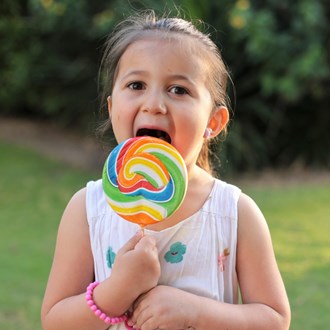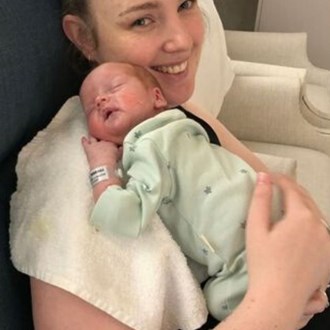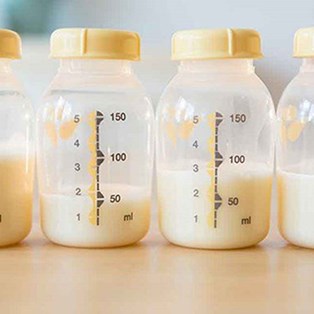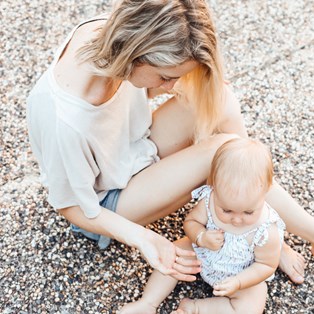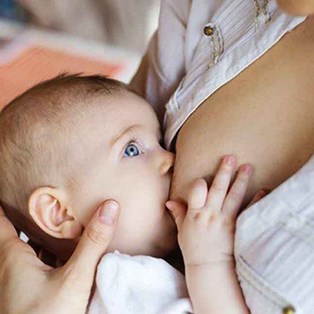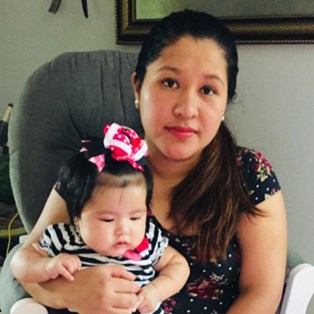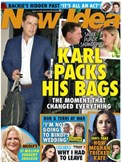How to stop breastfeeding: When is the right time to stop breastfeeding?

Our step-by-step guide will help you wean your baby and stop breastfeeding
By Frances Sheen
May 05 2019
How do you stop breastfeeding?
Stopping breastfeeding, or weaning, is when your baby no longer feeds on your breastmilk.
Every mum and baby are different, so deciding when to wean is a very personal choice and one that is made for a variety of reasons. Sometimes weaning is baby led and sometimes it's guided by the mother. However, regardless of when, how or why you stop breastfeeding, it's important for both you and the baby that you have a smooth transition.
What is weaning?
Weaning is the end of breastfeeding, when your baby no longer has any breastmilk. Weaning begins when your baby starts to eat food other than breastmilk and is usually a gradual process as your child gets older and relies more on other sources of nutrition. If your baby is eating food but still occasionally breastfeeding, it is called complementary breastfeeding.
When to stop breastfeeding
The World Health Organisation recommends exclusive breastfeeding until your baby starts eating solid foods at around six months. It's best for your baby if you keep breastfeeding while giving your baby solids until at least 12 months. However, this isn't always possible for a variety of reasons, and it's entirely up to you and your baby how long you breastfeed for.
What is baby-led weaning?
Your baby may decide they’ve had enough of breastfeeding and stop by themselves. This can sometimes cause mums to feel disappointed, sad or even rejected, particularly if they had a specific goal in mind (eg breastfeeding to one year). Contact the Australian Breastfeeding Association for help if needed. And remember that the closeness and cuddles with your baby will not end when breastfeeding does.
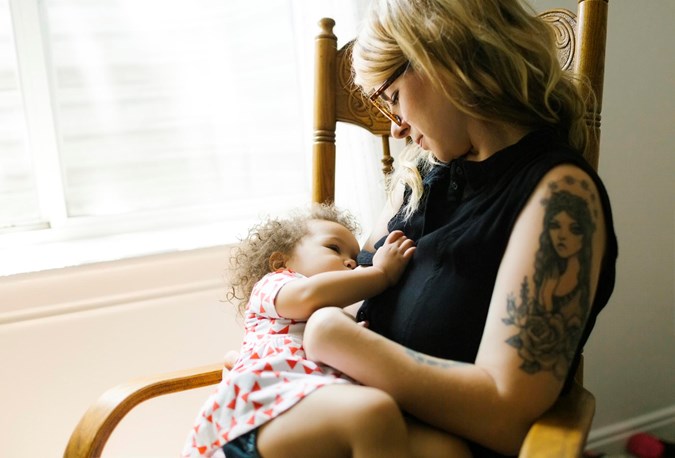
getty images
Signs that a baby is ready to wean
Babies often experience growth spurts within their first six months - this can lead to an increase in their hunger levels.
It’s important not to confuse this with the real signs of weaning, as your baby’s digestive system needs time to develop before it is ready to process solids. You should never introduce solids before 4 months (17 weeks). Before this, the gut isn’t sufficiently developed to deal with foods other than breastmilk.
- Increased interest in your food. This can include watching your mouth as you eat and trying to grab food from you.
- Still being hungry after a breastfeed. While this can mean a growth spurt, if you've noticed that your baby is constantly hungry it can be a good indication.
- Sitting up independently - can they sit easily in a highchair with their back supported?
- Holding head upright - can they hold their head steady and move it from side to side?
- Coordinating hands, eyes and mouth - does your baby grasp toys and objects, and try to put them into her mouth?
What is mother-led weaning?
Mother-led weaning is when mum decides she doesn’t want to breastfeed any more. This may because they have had enough, they’ve decided baby is thriving well on solids, or they may want to try and fall pregnant and breastfeeding may be inhibiting ovulation. Whatever the reason, remember it’s your body, your baby, and your choice.
What is the process when you stop breastfeeding?
There is no one-size-fits-all chart to follow for stopping breastfeeding.
All women's breasts respond differently, so it’s a matter of going slowly and seeing what feels right for you and your baby.
For a baby under 12 months, it's easiest to drop the feed your child is least interested in first. This is often in the middle of the day as babies love to feed first thing in the morning and last thing at night. If your child is under 6 or 8 months old you will need to replace this feed with formula.
If you're not keen on giving a bottle, and your child is older than 8 months and on solids, you could try a sippy cup or a cup with a straw.
Then wait a few days before you drop another breastfeed.
Regularly feel for lumps in your breasts. Your boobs might become engorged because Bub isn't draining them any more and this puts you at risk of mastitis. To get rid of the lumps use the flat of your hand to massage them and try it in a warm shower. Massage towards your nipple.
Use cold packs between feeds if your boobs are feeling a bit full and sore. Some mums have to wait several weeks before dropping the next feed, some only a few days.This process also works if you are expressing only, you just slowly reduce the expressing sessions.
For children over 12 months, family foods can take over as the main source of nutrition, so the process can be a bit more relaxed and there’s no need to replace dropped feeds with any other milks.
Feed your child foods that are rich in calcium like yoghurt, cheese, cows’ milk on cereal, and leafy greens and of course, drinking water is great at this age.
Do mums sometimes stop breastfeeding before they are ready?
The biggest reasons for giving bub bottle feeds were: not enough milk (30 per cent), it was just time to stop (23 per cent), problems including cracked nipples (10 per cent) and going back to work (eight per cent). Mums who find themselves weaning their babies from the breast often feel a deep sense of loss and failure.
“While this is a completely natural reaction, it is important to remember that you certainly have not failed and even if your baby received one drop of colostrum, you have provided your baby with a great start to life,” says Ashlee Stirling, a paediatric nurse and lactation consultant.
“Don’t feel concerned that because you aren’t breastfeeding, you have lost your opportunity to bond with your baby. You are still her main carer and your connection will be strengthened every time you respond to her needs.”

getty images
What’s the best way to wean?
Generally, it’s a good idea to wean slowly if you can, to protect your baby, reduce the likelihood of very swollen and engorged breasts, and to allow your milk supply to slowly decrease. Slow weaning also reduces the risk of blocked ducts and mastitis.
Depending on his age, you can transition your baby to drinking from a bottle or a cup, and still enjoy closeness and cuddles at feeding time. If your baby is under seven months, use a bottle, but older babies can transition straight to a cup. Babies younger than one year can be weaned onto formula, whereas from one year they can drink cow’s milk.
When you start weaning, begin by replacing the breastfeed your baby seems least keen on with expressed breastmilk, infant formula or cow’s milk, from a cup or a bottle. Drop one breastfeed at a time, and wait a few days or a week before you drop the next one.
Dealing with painful or engorged breasts
Regardless of how quickly or slowly you wean, you will experience some level of discomfort. When this happens, hand express or use a hand pump to remove some of the milk until you feel more comfortable. Do not try to empty your breasts completely as this will just build up your supply again.
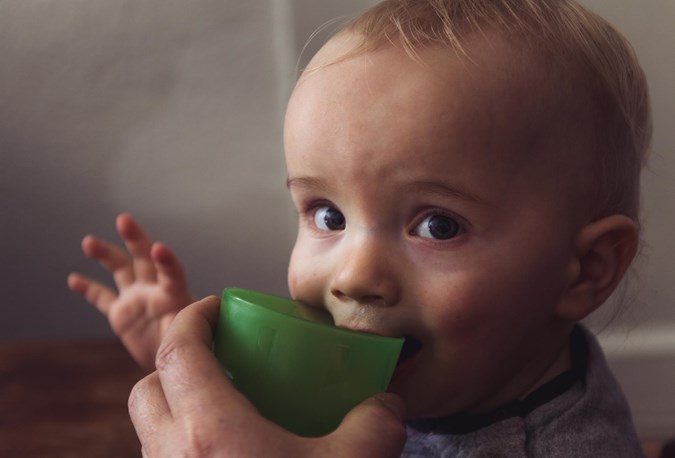
getty images
What if my baby doesn’t want to wean?
If your baby is reluctant to stop breastfeeding, try these tips from the Australian Breastfeeding Association.
• Offer your baby a dummy for extra sucking if she needs it.
• Give your baby formula before breastmilk, if doing both at the same feed.
• Offer one breast only at each feed and ensure that your baby has plenty of other drinks.
• Feed your baby to a fixed routine if this is possible.
Why do I feel sad after weaning?
It’s normal to feel a bit down after your final breastfeed, even if you were looking forward to weaning your baby. Your hormones may take some time to get back to normal and ovulation and menstruation may take a few months to balance out too. Remember that breastfeeding gives you some protection against falling pregnant, so if you don’t want to conceive you will need to consider other methods of contraception after weaning.


